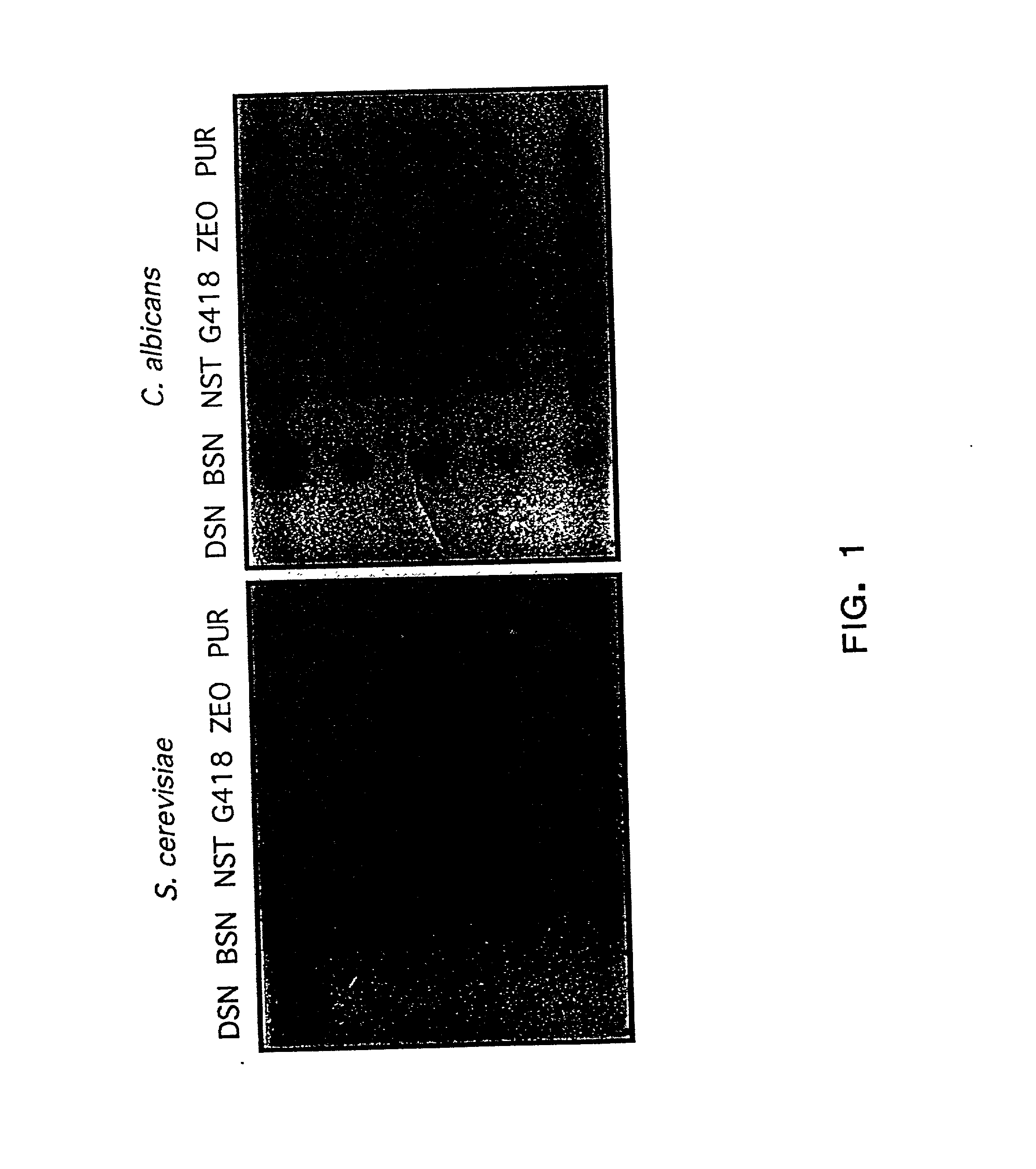Dominant selectable marker for gene transformation and disruption in yeasts
a gene transformation and yeast technology, applied in the field of nourseothricin (nst) drug sensitivity, can solve the problems of affecting growth rate, affecting analysis, and limiting dependency, so as to achieve gene manipulation, strong antifungal activity, and no affecting growth rate or hyphal formation
- Summary
- Abstract
- Description
- Claims
- Application Information
AI Technical Summary
Benefits of technology
Problems solved by technology
Method used
Image
Examples
Embodiment Construction
[0032] The present invention relates to the development of nourseothricin (NST) as a dominant selectable marker useful for genetic manipulation of fungi. In particular, the present invention provides the use of NST sensitivity in S. cerevisiae, and in the pathogenic yeast, C. albicans. NST was demonstrated to possess potent fungicidal activity which allowed the development of a dominant drug-based selectable marker system for gene transformation and gene disruption experiments in C. albicans and S. cerevisiae.
[0033] To explore the possibility of developing a dominant selectable marker for C. albicans, geneticin, the aminoglycoside used in dominant selection studies in S. cerevisiae was initially examined for antifungal activity in C. albicans (FIG. 1). Geneticin failed to show significant fungicidal activity against C. albicans strain SC5314 by halo assay at concentrations several-fold higher than typically used in selection experiments in S. cerevisiae....
PUM
| Property | Measurement | Unit |
|---|---|---|
| concentrations | aaaaa | aaaaa |
| concentrations | aaaaa | aaaaa |
| concentrations | aaaaa | aaaaa |
Abstract
Description
Claims
Application Information
 Login to View More
Login to View More - R&D
- Intellectual Property
- Life Sciences
- Materials
- Tech Scout
- Unparalleled Data Quality
- Higher Quality Content
- 60% Fewer Hallucinations
Browse by: Latest US Patents, China's latest patents, Technical Efficacy Thesaurus, Application Domain, Technology Topic, Popular Technical Reports.
© 2025 PatSnap. All rights reserved.Legal|Privacy policy|Modern Slavery Act Transparency Statement|Sitemap|About US| Contact US: help@patsnap.com



